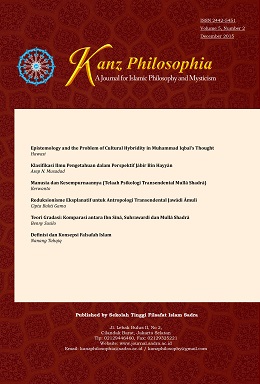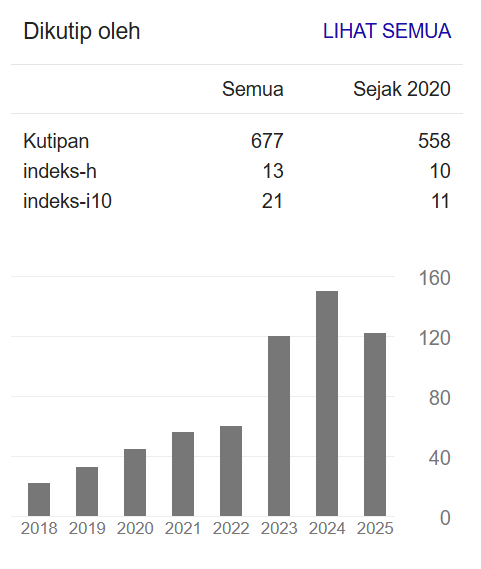TEORI GRADASI:
KOMPARASI ANTARA IBN SĪNᾹ, SUHRAWARDĪ DAN MULLᾹ SHADRᾹ
Keywords:
gradation, the gradation in matters, the causal gradation, the accidental gradationAbstract
Prior to Mullā Ṣadrā, the discussion of the gradation (al-tashkīk) was limited on the category of quality and that of quantity, both are known as the differential gradation (al-tashkīk al-tafāḍulī). In Ibn Sīnā’s point of view, the gradation occurs in the accidental matters (al-tashkīk fī al-‘araḍī) while in Suhrawardi’s, it occurs in the quiddity (al-tashkīk fī al-māhiyyah). Mullā Ṣadrā rejects both views and proves that essentially (bi al-dhāt) the gradation, in the specific sense, occurs in the reality of existence (tashkīk fī ḥaqīqat al-wujūd), while the gradation in the general sense just follows (bi al-ilḥaq) it. Using descriptive-analytical method and comparative approaches, this article is aimed to show the meeting points as well as separating ones of the thoughts of the three philosophers concerning gradation; also, to point out that Mullā Ṣadrā proceeds to elaborate two other kinds of gradation after proving the oneness in the reality of existence and asserting the differential gradation in it.
Downloads
Downloads
Published
How to Cite
Issue
Section
License
Copyright (c) 2015 Sekolah Tinggi Filsafat Islam (STFI) Sadra

This work is licensed under a Creative Commons Attribution-NonCommercial-ShareAlike 4.0 International License.

























